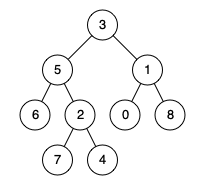Git 命令手册
Git管理的文件分为:工作区,版本库,版本库又分为暂存区stage和暂存区分支master(仓库)
工作区>>>>暂存区>>>>仓库
Thinking outside the box
Given a non-empty string s and a dictionary wordDict containing a list of non-empty words, add spaces in s to construct a sentence where each word is a valid dictionary word. Return all such possible sentences.
Note:
Example 1:
1 | Input: |
Example 2:
1 | Input: |
Example 3:
1 | Input: |
Given a non-empty string s and a dictionary wordDict containing a list of non-empty words, determine if s can be segmented into a space-separated sequence of one or more dictionary words.
Note:
Example 1:
1 | Input: s = "leetcode", wordDict = ["leet", "code"] |
Example 2:
1 | Input: s = "applepenapple", wordDict = ["apple", "pen"] |
Example 3:
1 | Input: s = "catsandog", wordDict = ["cats", "dog", "sand", "and", "cat"] |
A linked list is given such that each node contains an additional random pointer which could point to any node in the list or null.
Return a deep copy of the list.
Example 1:

1 | Input: |
Note:
Given an array of size n, find the majority element. The majority element is the element that appears more than ⌊ n/2 ⌋ times.
You may assume that the array is non-empty and the majority element always exist in the array.
Example 1:
1 | Input: [3,2,3] |
Example 2:
1 | Input: [2,2,1,1,1,2,2] |
Given a non-empty array of integers, every element appears three times except for one, which appears exactly once. Find that single one.
Note:
Your algorithm should have a linear runtime complexity. Could you implement it without using extra memory?
Example 1:
1 | Input: [2,2,3,2] |
Example 2:
1 | Input: [0,1,0,1,0,1,99] |
Given a non-empty array of integers, every element appears twice except for one. Find that single one.
Note:
Your algorithm should have a linear runtime complexity. Could you implement it without using extra memory?
Example 1:
1 | Input: [2,2,1] |
Example 2:
1 | Input: [4,1,2,1,2] |
Given a binary tree, find the lowest common ancestor (LCA) of two given nodes in the tree.
According to the definition of LCA on Wikipedia: “The lowest common ancestor is defined between two nodes p and q as the lowest node in T that has both p and q as descendants (where we allow a node to be a descendant of itself).”
Given the following binary tree: root = [3,5,1,6,2,0,8,null,null,7,4]

Example 1:
1 | Input: root = [3,5,1,6,2,0,8,null,null,7,4], p = 5, q = 1 |
Example 2:
1 | Input: root = [3,5,1,6,2,0,8,null,null,7,4], p = 5, q = 4 |
Note:
Given an integer array nums, find the contiguous subarray within an array (containing at least one number) which has the largest product.
Example 1:
1 | Input: [2,3,-2,4] |
Example 2:
1 | Input: [-2,0,-1] |